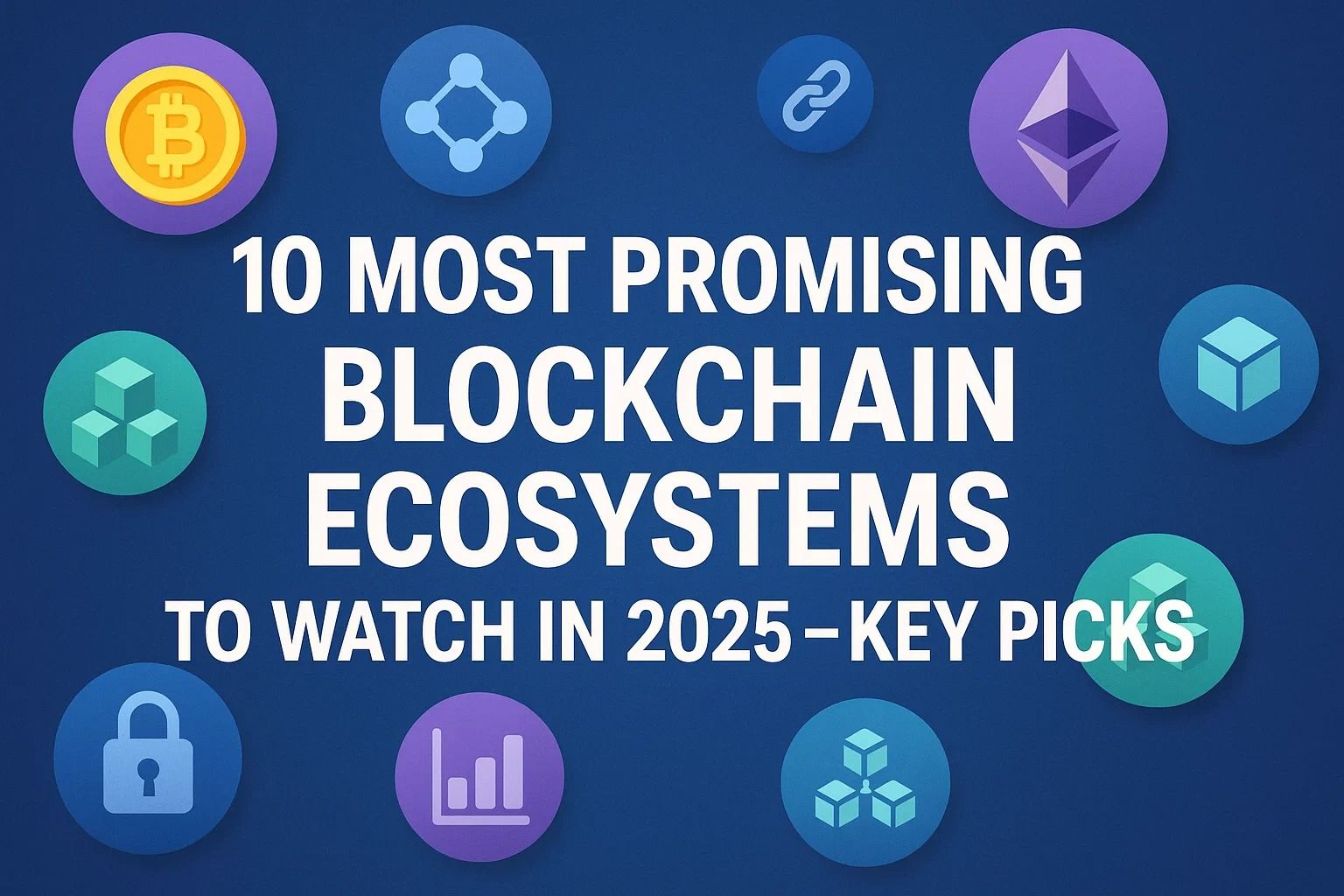
10 Most Promising Blockchain Ecosystems to Watch in 2025 — Key Picks
Why These Blockchain Ecosystems Matter in 2025
As Web3 evolves, only certain blockchain ecosystems emerge with genuine adoption, robust developer activity, and deep-rooted real-world applications. This article highlights the top 10 most exciting ecosystems to watch for in 2025, with an emphasis on projects with superior scalability, user safety, robust tokenomics, and increasing active user bases.
How We Picked 10 to Watch
- Developer activity: sustained growth in commits, tooling, SDKs.
- On-chain usage: active wallets, TVL (for DeFi), and demand for NFTs.
- Scalability & Cost: transaction throughput and fees under real stressed load.
- Interoperability: bridges, IBC or other cross-chain messaging standards.
- Token & Economic Design: incentives to align participants for long-term ownership.
- Real-World Adoption: partnerships, DePIN, enterprise pilots, or healthy dApp ecosystem.
1. Ethereum
The largest smart-contract ecosystem by developer activity and TVL. Ethereum is still the preferred home for DeFi, NFTs, and composable protocols—its rich tooling and enormous network effects reinforce its status as a central pillar of Web3.
2. Solana
Solana boasts high throughput and ultra-low fees, supporting many gaming and NFT projects. Its fast-finality, cheap transactions, and fast merchant settlements are key attractions for consumer-facing applications requiring a smooth user experience.
3. Cosmos
Cosmos is based on the premise that every blockchain should be its own sovereign chain, with interoperability built through IBC (Inter-Blockchain Communication). It’s maturing as a network of connected sovereignty chains, optimizing for projects that want cross-chain asset transfers and data calls, with modular chains tailored for specific use cases.
4. Polkadot
Polkadot’s parachain design creates a vertical integration for interoperability without sacrificing customizability. Projects that require custom runtime logic or specific cross-chain messaging often favor Polkadot's parachain ecosystem, where each project can express itself as its own sovereign project.
5. Avalanche
Avalanche provides near-instant finality and customizable subnets. It is attracting DeFi protocols and institutional pilots for tokenized assets. Its low latency and robust consensus mechanism make it one of the quickest Layer 1s in production.
6. Sui
A newer Layer 1 built around object-centric programming, Sui supports high-performance dApps with a strong UX. Its focus on scalability and developer-friendly tooling makes it an emerging competitor in the smart contract space.
7. Near Protocol
Near prioritizes usability with human-readable accounts and low-cost sharded scaling. It is becoming a preferred platform for consumer apps, gaming, and cross-chain solutions that need smooth onboarding for non-crypto users.
8. Cardano
Cardano follows a research-first philosophy, with a strong academic pedigree and gradual release of more robust smart contract features. Its community-driven governance and emphasis on sustainability give it unique positioning for long-term adoption.
Interested in how these platforms compare in practice? Read our guide on cloud hosting for scaling projects to see how infrastructure choices also impact Web3 adoption.
9. Algorand
Algorand marries sustainability with high throughput and strong financial use cases. Its instant finality and low fees make it a top choice for cross-border payments, stablecoins, and enterprise blockchain.
10. Arbitrum
As one of the top Ethereum Layer 2s, Arbitrum uses optimistic rollups to deliver scalable and cheap dApps, quickly becoming the go-to environment for DeFi and NFTs that want Ethereum security at lower tx costs.
Main Thought
These 10 ecosystems illustrate the rich diversity and innovation that are shaping Web3 in 2025. From Ethereum's unparalleled network effects to fast movers like Solana and Sui, blockchain's future will likely be multi-chain.
- Ethereum & Arbitrum: Core hubs for composable dApps.
- Solana & Avalanche: High-speed chains for consumer apps.
- Cosmos & Polkadot: Interoperability framework leaders.
- Cardano & Algorand: Sustainable long-term plays.
- Sui & Near: User/developer-friendly challengers.
To learn more about how interoperability strengthens these ecosystems, read our piece on blockchain ecosystems explained.
In 2025, the best projects will be the ones that integrate innovation, adoption, and interoperability into a single framework: an open, inclusive, and robust blockchain ecosystem.

















